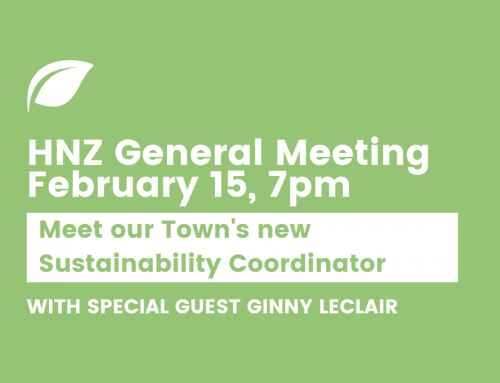by John Borger
Originally appeared in the Hingham Anchor (3/14/21)
You probably have a smart phone. Take it out. It has many times more computing power and storage space than the personal computer you may have had only 15 years ago, not to mention a fantastic camera, robust Wi-Fi connectivity, an advanced GPS capability and countless ingenious apps. You are holding in your hand the very embodiment of Moore’s Law. In 1965, computer engineer Gordon Moore observed that the number of transistors on a silicon chip was doubling every two years at half the cost. This is exponential change, disruptive change, transformational change. It seems miraculous but it’s real. Just look at your smartphone. Or your flat screen TV.
Today, the energy sector is similarly transforming due to exponential growth in clean, renewable electric energy from the sun and the wind. A climate action plan will help Hingham residents harness and navigate these transformational changes. Because the sun doesn’t always shine, and the wind doesn’t always blow, some of that renewable energy must be stored in lithium ion batteries, which are also steadily becoming more efficient. Rapidly improving generation and storage efficiencies together with increasing economies of scale are driving costs down and accelerating adoption of solar and wind at an exponential rate, transforming the energy sector. Consider:
• In 2016 – the U.S. had 1 million solar installations (it took 40 years to get there)
• In 2019 – 3 years later, the U.S. had exceeded 2 million solar installations – double!
• In 2023 – 4 years later, the U.S. is projected to hit 4 million solar installations – double again!
This is an exponential rate of change.
• By 2022, Massachusetts will be procuring 1.6 billion watts (or 1.6 “gigawatts”) of electricity from new offshore wind installations. The developers have referred to the waters off Massachusetts as the “Saudi Arabia of offshore wind ”. Massachusetts will increasingly be producing its own clean energy, replacing dirty coal and gas.
• Massachusetts recently joined California in requiring all new passenger cars be electric-powered as of January 1, 2036. Ford, GM and others are moving aggressively to all-EV product lines. GM will use 100% renewable energy in its U.S. manufacturing facilities by 2030. Car makers are not climate saints. They are capitalists. They are skating to where they think the puck is going to be.
• In 2020, the Hingham Municipal Lighting Plant (HMLP) got more than half of its energy supply from non-carbon emitting sources – a new first! About 29% of the total is nuclear power, with the remaining 26% from wind, hydro, solar, and landfill gas. This is a great accomplishment and evidence of HMLP’s commitment to move to 100% clean sourcing while preserving reliability and affordability.
• My latest HMLP bill tells me I am currently paying almost 17 cents per kilowatt hour (kWh) for electricity. Think tank ReThinkX predicts that the average cost per kilowatt hour (kWh) in 2035 for the US market will be around 3.5 cents – almost 5 times less.
For any one region of the country, with its unique patterns of sunshine and wind, there is an investment “sweet spot” – all the energy needed, at a cost lower than fossil fuels, from an optimal mix of solar and wind generated electricity, used immediately or stored in batteries. We are now schussing down the renewables cost curve toward those sweet spots. Costs will continue to decline as proliferating solar and wind installations drive economies of scale. Once you invest in that capacity, you’re essentially done, cost-wise; now the energy from the sun and wind is virtually free. Because capacity will be scaled to generate adequate power to get us through the days of less sun and wind, peak generating periods will give us far more renewable energy than we need. The marginal cost of that extra energy is – zero! Free electricity to use however we want. The possibilities are endless.
In the next 15 years, that gasoline-powered car in your driveway will become as obsolete as the antique cars you see in Hingham’s 4th of July parade. Maybe not today, maybe not tomorrow, but soon, and for the rest of your life, you will be driving an electric car with a battery charged by renewable energy from the solar panels on your roof or from the transformed electrical grid. Your house will be heated and cooled with air source heat pumps because why would you pay more for dirty, dangerous fossil fuels?
What does this exponential rate of change in the energy sector mean for how we govern ourselves in this beautiful old New England town? For one thing, it means that the risk associated with decisions that have longer range planning horizons – 10, 15 years or more – will steadily increase. In yesterday’s linear energy world, designing a new school had relatively low risk of obsolescence – improvements in energy efficiency and cost would occur at a predictable rate and the building would probably wear out before the fossil fuel-based heating system became truly obsolete. So how do we now manage decision risk in a rapidly transforming energy world of exponential change and increasingly cheap electricity? How do we ensure we are capitalizing on the extraordinary opportunities that will arise out of this transformation?
The first and most critical step is to develop a comprehensive climate action plan (CAP). The CAP will enable us to better understand what is coming and will integrate that awareness into every dimension of town governance. It will specify priorities, opportunities, goals, and key players. It will guide collaboration among town departments, businesses, civic organization and individual citizens. It will be our collective roadmap for navigating climate change and reaping the benefits of the renewables-driven transformation of the energy sector.
That transformation is the key enabler of perhaps the single most effective strategy for getting Hingham to net zero – electrification. We’ll explore electrification in our next post. Meanwhile – please plan to vote for the Selectmen’s climate warrant articles at Town Meeting (May 8th, Hingham High School, 2:00PM). Support a climate action plan for Hingham!





